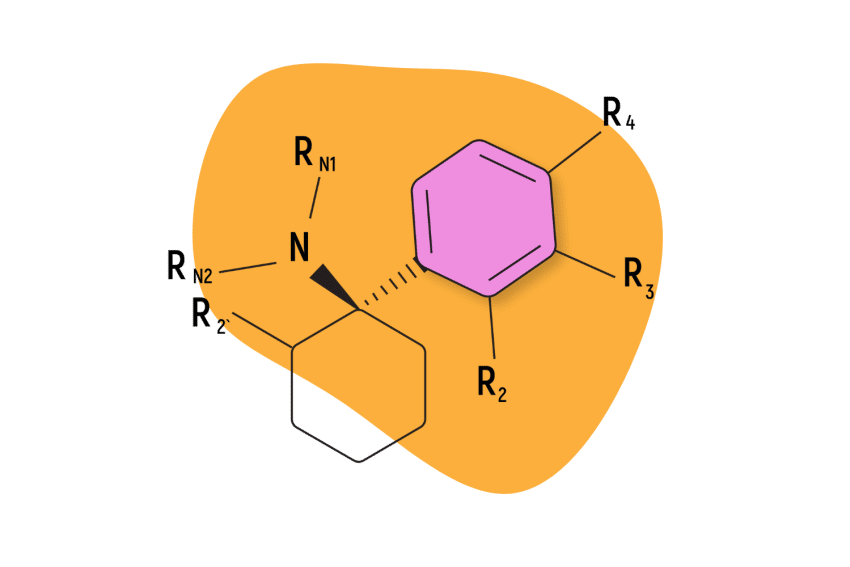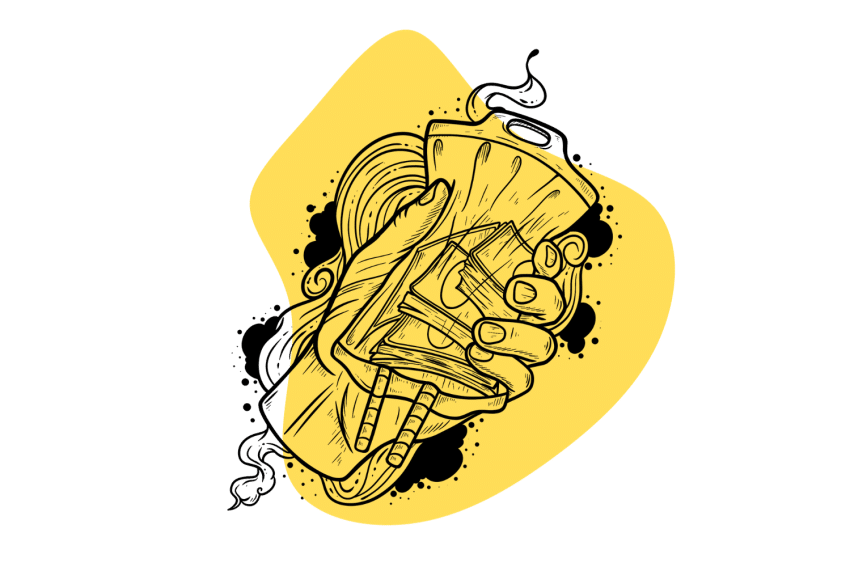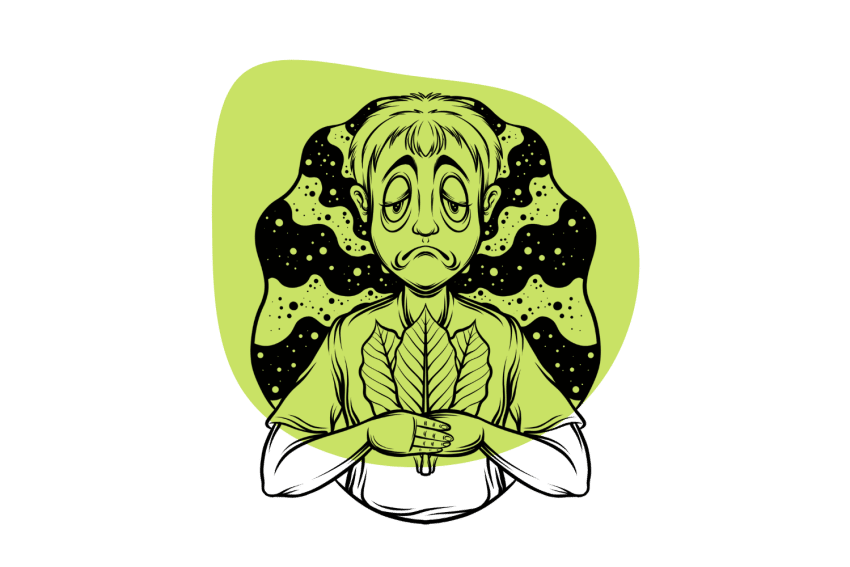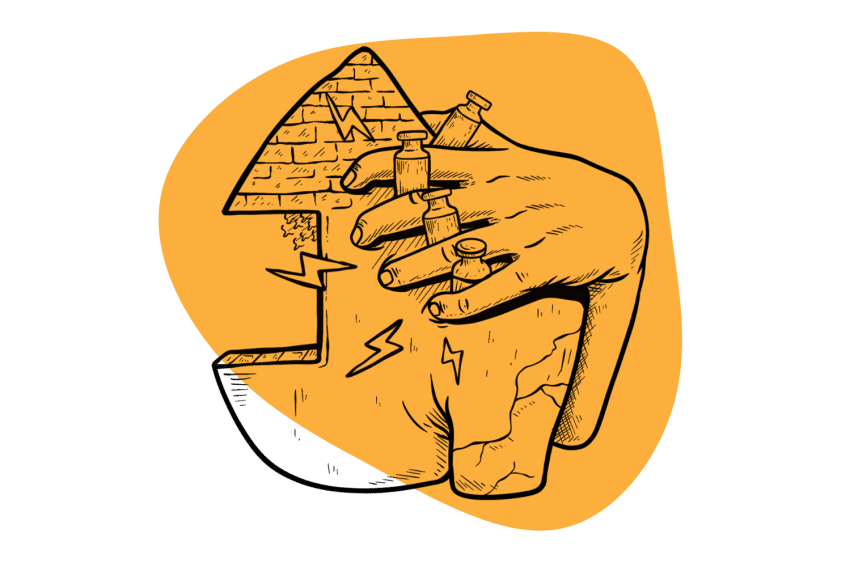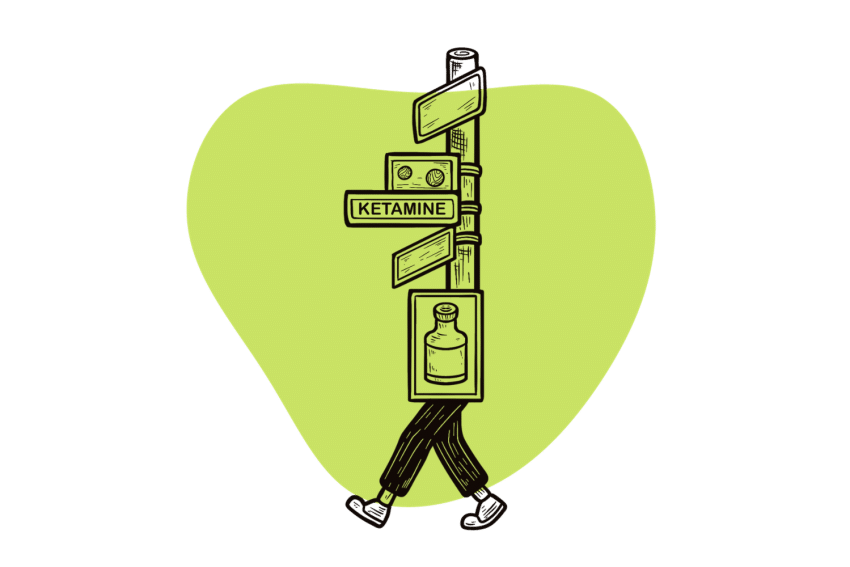A Journey Through Ketamine Withdrawal: What to Expect & How to Overcome It
Despite the hype, ketamine isn’t risk-free — addiction is a real possibility, so here’s what you should know.
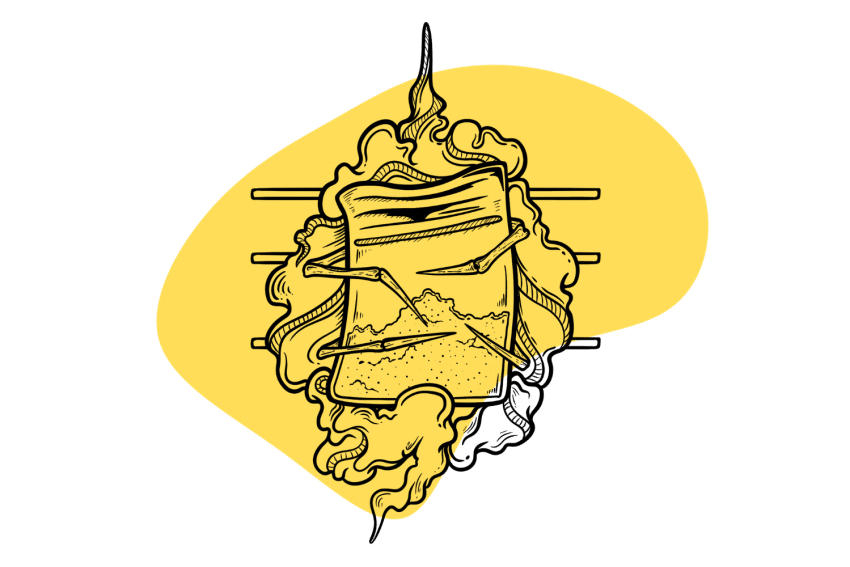
Ketamine, known to some as a horse tranquilizer and to others as a groundbreaking depression treatment, is a unique player in the world of drugs.
It’s a dissociative anesthetic that alters perception and consciousness, making it attractive to psychonauts seeking insight into personal issues or a connection with a higher power.
But as with any substance, there’s a flip side.
Psychological reliance can occur due to a number of reasons, from escapism to misinformation to underlying mental health issues — leading to serious health consequences.
If you’re concerned about ketamine addiction, we’ll explore the signs of withdrawal, how ketamine abuse can happen, and treatment options.
Ketamine Withdrawal Symptoms
Like any psychoactive substance, quitting or reducing intake after habitual use can lead to withdrawal symptoms.
An individual might develop a compulsion to use ketamine to alter their mood or perception, but the body doesn’t necessarily develop a strong physical dependence in the same way it might for drugs like opioids and benzodiazepines.
For ketamine, the severity of the experience is influenced by the length and intensity of use and the individual’s physiology, mental health state, concurrent substance abuse, and overall health.
Physical withdrawal symptoms can include:
- Ketamine cravings
- Sleep disturbances
- Tremors and shakes
- Sweating
- Rapid heartbeat
- Loss of appetite (which can lead to weight loss)
- Hearing loss
- Fatigue
Psychological symptoms of ketamine withdrawal:
- Psychosis
- Confusion
- Agitation (sometimes rage)
- Anxiety and depression
- Flashbacks
- Cognitive impairment
- Concentration difficulties
How Long Does Ketamine Withdrawal Last?
While many individuals follow a general pattern for ketamine withdrawal, the intensity, duration, and even the order of symptoms can vary.
Here’s an example of a typical ketamine withdrawal timeline, but remember that everyone’s experience can have nuances.
The First 24-72 Hours (1-3 Days)
The first few days of quitting ketamine cold turkey can be the most challenging.
Since ketamine is a dissociative anesthetic, the brain may experience a “rebounding effect.” When one returns to their baseline state, they can feel moments of disconnectedness and confusion.
Ketamine isn’t classically considered to be physically addictive. However, individuals who use the drug heavily and frequently may develop a strong psychological dependence.
Within the first few days, people may experience intense cravings for the drug, making them irritable, tired, or depressed.
While the first 24-72 hours can be daunting, it’s important to remember that this is a transitional phase. Navigate these initial challenges with support from friends, family, or medical professionals.
As moving through the initial — and often the most tumultuous — first three days of ketamine withdrawal, the journey takes a slightly different, albeit still challenging, turn.
Cravings may not be as intense. However, the desire for ketamine can still rear its head.
Sleep patterns can change during this phase as well. Some people experience insomnia, while others experience vivid dreams that can be distressing or related to ketamine use. This is likely a product of the brain processing the experience of withdrawal.
The sharp edges of emotion that were much more prominent during the initial withdrawal phase can start to mellow out here, though some people describe a sense of mental cloudiness or difficulty concentrating during this period.
It’s normal for external factors like stressful situations to elicit temporary emotional setbacks, so be mindful of these triggers and have coping strategies in place.
Related: How Long Does Ketamine Stay In Your System?
Days 11-21 (2-3 Weeks)
The mind and body start to find balance, having weathered the storm of the initial withdrawals, and many people have an increase in their energy levels and appetite again.
However, the mind can still occasionally be ensnared by the chains of cravings. Though reduced from the initial days, these psychological urges are a stark reminder of the physical and mental recovery process dichotomy.
This period is crucial for building or rebuilding relationships and seeking therapeutic interventions, if necessary.
Beyond 3 Weeks
For mild ketamine addiction, people start to find themselves in the clear past the 3-week mark. However, some individuals may experience withdrawal symptoms that stretch for months, including mood swings, ongoing cravings, or cognitive impairment. This is called Post-Acute Withdrawal Syndrome (PAWS).
Even after the primary withdrawal phase concludes, some people have intermittent bouts of depression or anxiety, possibly due to the potential nerve cell damage from frequent ketamine use.
The ghost of ketamine can linger, with sporadic cravings potentially popping up occasionally. Recognizing and navigating these moments is crucial, especially as they can arise unexpectedly.
Addressing these long-term psychological impacts often requires a combination of therapeutic interventions, lifestyle adjustments, and, in some cases, medications. Building a support network and embracing strategies for mental well-being can be instrumental in navigating this extended phase.
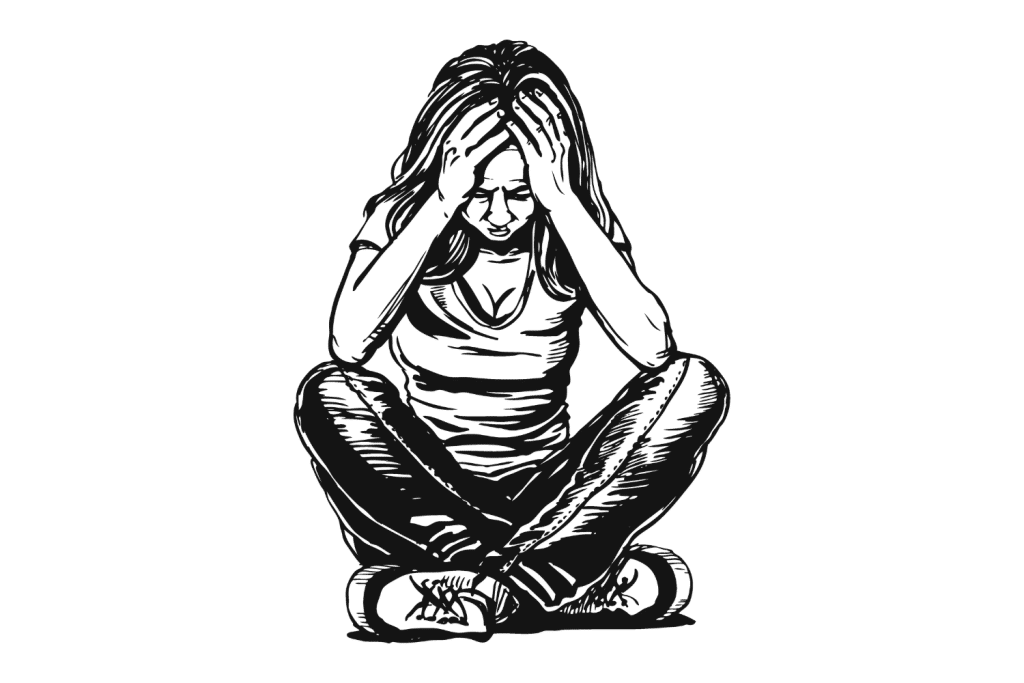
Understanding Ketamine Detox & Tapering: Why Quitting Cold Turkey Can Work
Just as individuals have varied reasons for using ketamine, their experiences during withdrawal can be equally diverse. One key determining factor is the duration and intensity of ketamine use. Habitual, high-dose users might find their withdrawal journey more tumultuous than occasional users.
Over time and with continued use, the body becomes more accustomed to ketamine, necessitating higher doses to achieve the same effects. This increased tolerance can amplify withdrawal’s severity when the drug is discontinued.
At its core, detoxification is the body’s natural process of expelling a substance, in this case, ketamine, and adapting to its absence. It’s a phase of physical recalibration, marked by withdrawal symptoms, as the body seeks to restore its baseline state.
Unlike benzodiazepines or opioids, where a tapering regimen can reduce severe withdrawal symptoms, ketamine doesn’t always follow this rule.
For some, tapering might prolong the withdrawal process without significantly alleviating discomfort. An abrupt cessation can, in many instances, expedite the body’s return to its natural, drug-free state.
Treatments for Ketamine Dependence: A Path to Recovery
Recovery from ketamine addiction, or any addiction, isn’t a sprint; it’s a marathon. And just like any long race, there are aids and checkpoints.
Plenty of resources are available in person and online, from rehab centers to therapeutic interventions. With determination, support, and the right tools, coming out of ketamine addiction is possible.
For some, ketamine isn’t the only demon they’re contending with. Polydrug use — the simultaneous or sequential abuse of multiple substances — adds complexity to the recovery journey. The intertwined dependencies demand a multifaceted approach, targeting each substance while understanding their combined impact.
1. Rehab Centers
Rehab centers are structured environments dedicated to helping individuals break free from addiction. They have programs to empower individuals to learn to identify triggers, cope with cravings, and build resilience against relapse.
Cognitive behavioral therapy (CBT) delves deep into the psyche and is one of the cornerstones of many rehab programs. It seeks to unearth, understand, and transform destructive thought patterns and behaviors.
2. Individual Therapy and Group Counseling
Individual therapy provides a safe, confidential space to explore the roots of their addiction, address personal traumas, and chart a personalized path to recovery.
Sharing experiences, challenges, and triumphs with peers can be incredibly therapeutic. Realizing that one isn’t alone in this journey can be a monumental step towards healing.
3. Prescribed Medications
While there isn’t a one-size-fits-all drug specifically tailored for ketamine withdrawal, certain medications can ease the journey. From managing sleep disturbances to tempering anxiety, prescribed drugs can address specific withdrawal symptoms, making the process more manageable.
In cases where ketamine use has led to severe psychological symptoms, short-term use of antipsychotic medications might be appropriate.
However, the approach to treating ketamine withdrawal is typically multi-modal and focuses on psychological and physical health. Medications might be a part of the treatment plan, but behavioral therapies, counseling, and supportive care are also crucial.
Related: How Psychedelics Are Reinventing Addiction Therapy
How Long Does Ketamine Stay In Your System?
Ketamine’s active effects can last 1-3 hours, depending on the dose and administration, and it can stay detectable in urine for up to 24 hours after the last use. Ketamine is metabolized in the liver and excreted in the urine. Generally, it’s hard to detect in the body within a week, but traces can linger for months, especially in hair follicles.
While the ballpark figure is that ketamine becomes hard to detect in the body within a week, the exact duration is contingent on multiple factors.
Always consult a medical professional for personalized insights and guidance for anyone contemplating drug tests or lingering effects. And remember, even if a drug is no longer detectable in the system, it doesn’t negate the potential for long-term psychological or physical impacts. Be informed and tread wisely.
The Takeaway: Ketamine Withdrawal
While the symptoms of ketamine withdrawal can be daunting, it’s crucial to remember their impermanence. Many resources are at the fingertips of those in need, from rehabilitation centers to support groups. These tools, designed with compassion and expertise, are ready to guide the pathway to sobriety and healing.
Often, the simple act of sharing one’s struggles can be a salve for the soul. Opening up can lighten the burden and remind one that one isn’t alone in this battle, whether it’s a trusted friend, family member, or therapist.
Empathy is a powerful counterforce in a society that can sometimes be quick to judge. When we approach addiction not with disdain but understanding, we break the chains of shame that might bind those struggling.
Remember to reach out and stay connected if you find yourself or someone you love in a storm of addiction.
Subscribe to Tripsitter: Newsletter & Podcast
Unlock Your Mind: Subscribe for Expert Insights on Psychedelics 🍄🌵

